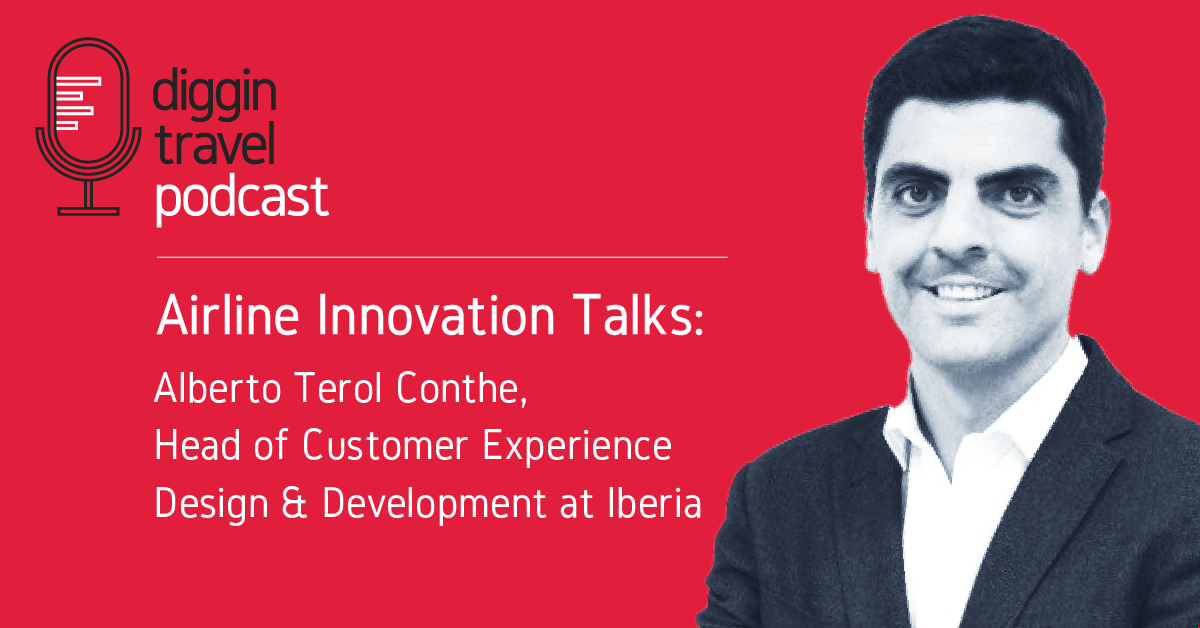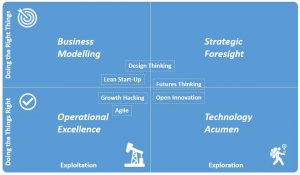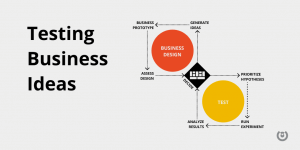Select Sidearea
Populate the sidearea with useful widgets. It’s simple to add images, categories, latest post, social media icon links, tag clouds, and more.


hello@youremail.com
+1234567890
+1234567890
Populate the sidearea with useful widgets. It’s simple to add images, categories, latest post, social media icon links, tag clouds, and more.


Iztok Franko

“Iztok, I love your new podcast series. You had an airline digital talk. Then you did an airline data talk. What’s next?”
This is what somebody asked me recently on LinkedIn. For me, the next step was obvious: next in line was an airline innovation talk.
Why an airline innovation talk? Because recently when I was thinking about innovative solutions, I started to think, where does innovation really happen? Can you point a finger at one department, one area in a company? Are innovation departments the solution?
In my opinion, innovation happens when you combine insights from different areas and different people: data and analytics, digital experience, UX/UI, experimentation, customer research, customer service, product design, etc. To do innovative things, one needs to know all these areas and understand how they fit together. You need to know how to leverage insights from these areas to understand your customer’s pain points and build innovative solutions to address those needs. And this is what marketing should be all about: how to provide value for your customers.
As I was thinking about all these things, I remembered a great post about marketing and innovation I read a while ago. The article was titled “Marketing Hero“, and it was written by Alberto Terol Conthe. So, the guest for our airline innovation talk was a no-brainer.
Listen to the new episode of the Diggintravel Podcast about airline innovation via the audio player below, or read on for key highlights from our talk with Alberto:
And don’t forget to subscribe to the Diggintravel Podcast in your preferred podcast app to stay on top of airline digital, innovation, and analytics trends!
Alberto opened his article with one of my favorite quotes by Peter Drucker: “Business has only two basic functions, marketing and innovation.” So, my first question for him was, how do marketing and innovation fit together?
I always have thought that they are all together. I’m a marketeer. I started as a marketeer at 3M. Previously I was working in Accenture consultancy as well. But I would say my main business school was marketing, and then moving into innovation, I think they are very close fields. I tend to think marketing is about value, is about understanding customer needs. It is part of the discovery, the research, and understanding the pains and gains of the customer, and innovation is more about creation – bringing some new ways of doing things and new processes and new technologies.
If you put them all together – value creation, marketing, and innovation – they go so well together. It’s turning an idea based on some customer pain or gain into a solution and executing it and providing value from the customer perspective. So they go together. And I think the skills of good marketeers and good innovative people are quite similar. They are around curiosity, questioning everything, bringing the what and the how and the when and the why to every conversation.
Alberto mentioned that execution is an important element of marketing. Recognizing your customer pain points and figuring out innovative solutions is not enough.
I think a fundamental element, as well, of marketing and innovation is the execution. I have had a lot of discussions with certain designers and people from innovation like, “We created this beautiful PPT, and now it’s a matter of the execution team to execute.” My point is that unless a product or a service is crafted and then deployed into the market and it’s being consumed by a customer, there is no success at all. It’s just an idea.
The way Alberto talked about marketing and innovation made a lot of sense to me. But what I see in most companies, especially the big ones, is that marketing is still mostly about advertising – or, in the digital marketing case, it’s mostly about taking care of the website, ecommerce, and digital advertising. Why do we often see a separate innovation department?
I think marketing is very wide. My background is product marketing. You mentioned all the branding and channel management and stuff, and that’s part of marketing. But maybe what I would compare more between marketing and innovation is product management. There, I think it’s very close to each other.
Another example I would bring to you is that I think innovation teams in large companies sometimes are located in the HR people area because of all the change management needed and all the transformation efforts and so on. I think sometimes, very frequently – and I think nowadays even more frequently – they belong to the IT and technical organization, because it’s very much leveraging technology.
Alberto has recognized a pattern when it comes to innovative companies:
The examples I have seen as more successful normally are those in which these companies put the innovation function – the initial innovation function, because I think it has to embrace the whole organization – but let’s say the team mobilizing innovation from the very beginning sits very close to the business. Therefore, again, I see the link between marketing – which for me is value creation and value delivery, which is basically business – very much related to innovation.
One other part of Alberto’s article that I really liked was the distinction between two key areas of marketing. One is execution; Alberto calls it “doing things right.” The other part is more about forward-thinking, strategic foresight, and business modeling, and that’s what he calls “doing the right things.”
That’s a sentence [distinction] that we use very much in our service design team. I think both steps are needed. It reminds me a little bit of the Double Diamond in service design, the divergence and then the convergence. I think these two elements – designing the right thing, for me it belongs more to marketing. It’s discovering the underlying customer need, the pain, the job to be done, and so on. It’s designing the right thing.

Source: Alberto Terol Conthe (LinkedIn)
When it comes to figuring out what the right thing is, Alberto mentioned an interesting “Real, Win, Worth” framework.
In 3M we had a heuristic that we used very frequently in designing the right thing, which is Real, Win, Worth. Every time we wanted to address if an opportunity was worth it for 3M, we would first envision if it was real, if there was a market, if there was a customer pain or need to be addressed. Is this opportunity real? The second one was, can we win? Do we have the capabilities in our company to achieve a successful business out of this opportunity? And the third one would be worth. Is it worth it, or would it be so costly or I would have to hire talent that I don’t have? Okay, so there’s opportunity, we could potentially win it, but it’s not worth it. Or it would not support our strategy or whatever. So for me, that’s the designing the right thing – deciding what you’re going to design and what’s out of scope as well, which is also very important.
And then we moved into designing things right. There is more the world of service design, designing a product and service that matches those needs that you have discovered in the designing the right thing. It has much more to do with UX, UI, choosing the right platform for delivering that product or service, choosing the right partners. It’s more the delivery part of the value. You can be very strong in value creation, but you can be very poor in value delivery. Again, execution becomes fundamental in the second part. We always, as service designers, try to keep both areas balanced – designing the right things, choosing the right fights to fight, but then deciding something that was worth it for the customer and appealing.
To me, this concept of doing the right things and doing things right was really interesting. My background, my experience, and also our Diggintravel Airline Digital Optimization research is more about doing things right – how to be agile, how to do growth marketing, how to do digital optimization and conversion optimization. But if you do systematic digital optimization right, with agile loops of analyzing customer needs, managing data, doing structured analytics, trying to find solutions and designing digital products to address those needs, you’re basically moving up to doing the right thing. So, I asked Alberto: how are these things connected?
It’s iterative. You could eventually start defining an arena that you want to fight for. That’s the design the right thing. Then you move into design things right, and then you discover that it’s impossible to deliver value in that field. Then you may decide to reassess if you are fighting for the right opportunity, or you could move into an adjacent opportunity or so on.
I think it’s an iterative process, and moreover, I think when you launch a product – and this is something we very often forget as service designers; we forget about the product when it’s being delivered. I think especially in those first weeks and months and even years after the launch, they should be in hyper-care, and we should be reconsidering every time, every week, following the KPIs, the metrics, and improving the product.
Alberto recognizes the value of applying the principles of experimentation and being agile to the overall business model and overall products, not just the digital side.
I had once a boss that always came with the question, “Are you 100% sure that this product will be successful?” I said, “Come on, I’m not, but this is the Pareto principle. I’m pretty sure that’s the case. I would say I’m 80% confident that it’s the right product for the right market segment. But let’s launch and let’s learn on the go and adjust and adapt.” So I’m very fond of experimentation and agile launching of new products. Otherwise, it’s paralysis by analysis.
A systematic loop of digital optimization is great for incremental improvement, but you have to know whether you’re optimizing the right things.
I think the other element – because you start with A/B testing and improving and these incremental improvements – the reason I was mentioning that designing the right thing is so important is because very often, especially these days, there’s obsession with efficiency. “We have to deliver efficiency gains.” My point is that there’s nothing so useless as doing something very efficiently which is not usable at all, or that we shouldn’t have done at all. We can be executing something beautifully, it’s very efficient, but there is no customer need or there is no market to be addressed. I think therefore we need to keep balance on both aspects.
But experimentation, rapid prototyping and so on – in fact, we had a discussion earlier this week about prototyping. We were discussing research and we want customer research in which we would envision what customers want for a specific product segment. My point was that customers would never come with a solution. That’s the job of the product owner, of the marketeer. Eventually, by prototyping and showing them some mockups, we can show them, “This is the size and the color and the shape that this would have. Are we working in the right direction, or is this something that doesn’t resonate with you at all?” I think all this rapid experimentation makes perfect sense with any product launch.

Source: Visual Summary of “Testing Business Ideas” by David J Bland and Alex Osterwalder
One of the key insights Alberto shared in our airline innovation talk was in regard to his key learnings. The first thing he mentioned was attitude:
I thought that innovation was more about skills. I think over the years, I’m discovering that it’s far more about attitude. That’s the approach when I’ve been hiring marketeers in 3M, or now service designers at Iberia: bringing people with curiosity, with this sense of observation, with customer obsession – and when I say customer obsession, it’s spending a lot of hours with customers, interacting with them. Not focus groups, which is a controlled environment, but observing customers dealing with our products and services.
Then Alberto mentioned another interesting aspect of innovation and culture.
I would say another totally different topic which is relevant for progressing with innovation in companies is how managers get measured. Maybe in the vision statement in a company, it says that “we would like to be the most innovative.” Okay, let’s go into the KPIs that managers are using. Are they being measured by the business as usual or by exploring the next big thing? Very often, that tells you the culture of innovation which is happening in the company.
I mentioned culture. For example, something I loved about the American approach to innovation – and I experienced that in 3M, but I’ve been talking with friends from HP, Salesforce – I think in American corporations, there’s emotional safety within the teams for putting some time for exploring and trying to discover things out of business as usual. The famous rule of the 15%. There are many different mechanisms for making the teams work on something which is enriching the total knowledge within the company, and they can openly share their findings, and mistakes are allowed and so on. That cultural aspect is fundamental as well.
If you want to learn from leaders like Alberto about airline innovation or want to be the first to know when our next Airline Innovation Talk will be published, please:
I am passionate about digital marketing and ecommerce, with more than 10 years of experience as a CMO and CIO in travel and multinational companies. I work as a strategic digital marketing and ecommerce consultant for global online travel brands. Constant learning is my main motivation, and this is why I launched Diggintravel.com, a content platform for travel digital marketers to obtain and share knowledge. If you want to learn or work with me check our Academy (learning with me) and Services (working with me) pages in the main menu of our website.
Download PDF with insights from 55 airline surveyed airlines.
Thanks! You will receive email with the PDF link shortly. If you are a Gmail user please check Promotions tab if email is not delivered to your Primary.
Seems like something went wrong. Please, try again or contact us.


No Comments